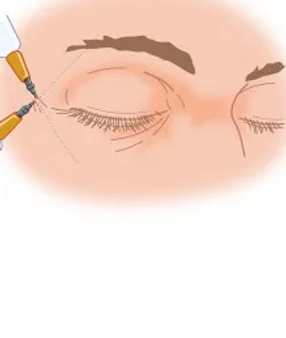Implementation

About the Implementation
Through use of materialistic and technological innovations, OPTIC plans to become implemented globally with the ability to restore vision for millions who suffer from retinal degenerative diseases. OPTIC's innovations allow for general accessibility and affordability across diverse regions and communities at a projected per-unit cost of under $5,000. Over time, OPTIC is predicted to become integrated into widespread healthcare, impacting the lives of millions for the better.
Surgery Process
Step 1
Inhibiting of Ophthalmic Nerve - Anesthesia:
The patient is placed under local or general anesthesia depending on their condition’s severity.

Step 3
Subretinal Bleed:
A cannula is inserted through the sclera into the subretinal space. A minimal volume of balanced salt solution is injected delicately to detach the retina. This creates a subretinal bleb and creates room for the prosthetic scaffold.

Step 5
Stabilization:
The scaffold is stabilized using specialized proteins: N-cadherin and E-cadherin. Additionally, crosslinked Hyaluronic Acid (HA) hydrogel is integrated to endure tissue regeneration.

Step 2
Pars Plana Vitrectomy:
A small incision is made in the sclera with a vitrector. The vitreous humor is then removed to create a clear path for the procedure.

Step 4
Prosthetic Insertion:
The prosthetic scaffold and its artificial photoreceptors are inserted through the incision. It is then placed into the subretinal space and embedded with high-density flexible electrode arrays.

Step 6
Retina Repositioning:
Once OPTIC is in its correct place, the retina is repositioned to its natural state. Then, the incision sites will be closed using microsurgical sutures.

Patient Care: After the procedure, the patient is observed for any complications. Patients will receive anti-inflammatory and antibiotic eye drops to prevent infection and minimize inflammation.
The Impact
Cost-Effectiveness
The incorporation of improved and organic materials, such as Quantum-Dots, into OPTIC allows for the retinal prosthesis to become more cost-effective, thus allowing for greater production rates at lower costs.


Wider Accessibility
Utilizing improved materials that reduce production costs additionally provides greater access to retinal prostheses for many individuals globally. Providing prostheses with lower costs means providing prostheses to a larger patient population.
Workforce Expansion
With the improved ability to see through OPTIC, patients who have initially been unable to participate in the workforce are now able to assist in various jobs and careers that were previously difficult or impossible without the use of a retinal prosthesis such as OPTIC. Individuals will have greater accessibility and opportunities for careers and jobs.


